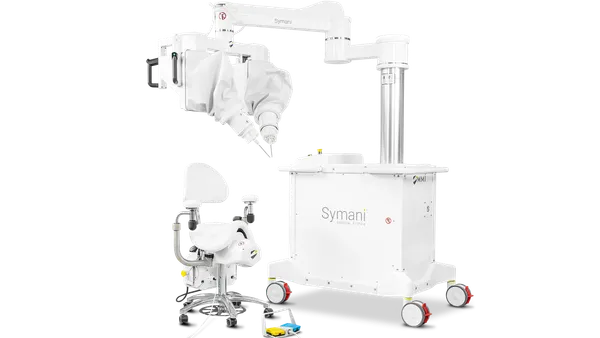Dive Brief:
- FDA released draft guidance Tuesday clarifying the type of clinical data that manufacturers of prostate tissue ablation devices should include in their marketing submissions.
- The guidance covers high-intensity ultrasound systems and devices that use newer technologies or forms of energy to ablate prostate tissue.
- FDA said it requires clinical testing to show that such devices do not destroy or damage tissue outside of the targeted area and are as effective at ablating tissue in the targeted area as a similar device with an equivalent safety profile.
Dive Insight:
The guidance is intended for clinical studies to support marketing authorization of devices with a general indication for prostate tissue ablation. It does not cover systems that are designed to treat specific diseases, such as prostate cancer or benign prostatic hyperplasia. Testing for disease-specific devices uses different study endpoints and designs to demonstrate safety and effectiveness, the agency said.
The agency recommends that manufacturers contact FDA with a pre-submission to receive detailed feedback on the clinical testing that is planned.
FDA said it granted a De Novo request in 2015 to SonaCare Medical for a high-intensity ultrasound system for prostate tissue ablation. The system is a computer-controlled device for transrectal delivery of focused ultrasound energy to destroy areas of unwanted prostatic tissue with thermal ablation.
In the draft guidance, FDA recommended clinical studies comply with clinical testing special controls for new high intensity ultrasound systems and devices with changes to the ablation energy output characteristics relative to 510(k) versions.
In some cases, real-world data may be used to support energy output changes for devices that have already obtained 510(k) clearance, the agency said. If a cleared device is being used in the normal course of medical practice, an investigational device exemption (IDE) likely wouldn't be required.
Reports containing clinical study results should include an executive summary or overview, site and investigator identification, patient demographics and baseline characteristics, treatment data, protocol deviations, safety and effectiveness endpoints, conclusions, and the study protocol, FDA said.
The study should enroll men for whom prostate tissue ablation is clinically warranted. Patient characteristics should be uniform on the underlying condition for the prostate ablation, whether benign or malignant disease, for example, FDA said. The prescribed extent of ablation, such as whole gland, hemiablation or focal ablation, should be included.










